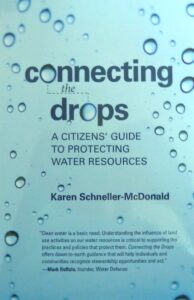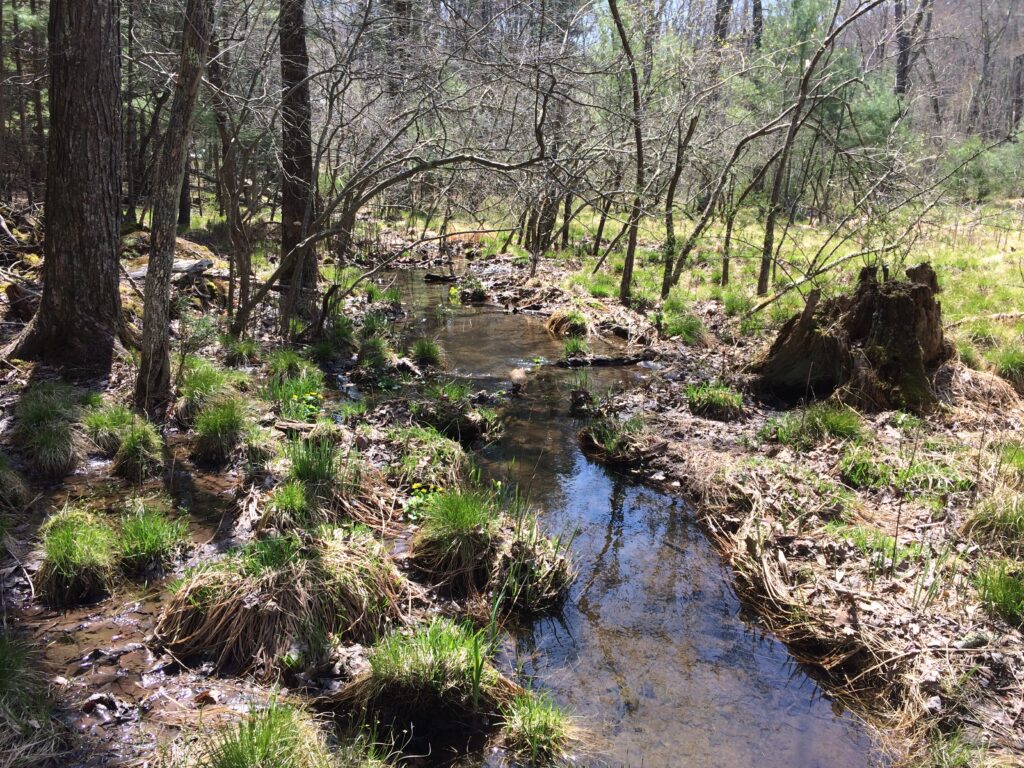Connecting the Drops
Connecting the Drops: A citizens’ guide to protecting water resources
by Karen Schneller-McDonald (Cornell University Press, 2015)
“We face a water crisis. We don’t experience this crisis as one sudden catastrophe that dries up wells or poisons drinking water overnight. Instead, we experience insidious, incremental events—oil spills, floods, polluted runoff, hydrofracking operations—that threaten our water and our communities in one place at a time. Small regional disasters accumulate into an increasingly serious and widespread threat to all our streams, rivers, lakes, and groundwater.”
Endorsements
“Clean water is a basic need. Understanding the influence of land use activities on our water resources is critical to supporting the practices and policies that protect them. Connecting the Drops offers down-to-earth guidance that will help individuals and communities recognize stewardship opportunities and act.” —Mark Ruffalo, founder, Water Defense
“Connecting the Drops offers both knowledge and hope; it is an essential guide to action and overcoming the global water crisis.”—Richard Louv, author of The Nature Principle and Last Child in the Woods
Connecting the Drops helps the reader make connections between human activities and their effects on natural water systems. It will help answer questions such as:
- How do ecosystems, watersheds, and natural cycles work, and why do we need them?
- How does residential, agricultural, and industrial development affect watersheds and ecosystems?
- How can I determine whether environmental protection actions are effective?
- What do catchwords like significant impacts, cumulative effects, and mitigation mean?
- What are the obstacles to effective water resource protection and how can I overcome them?
- How can I develop a strategy for action in my community to improve environmental protection?
The book is divided into the following sections and chapters:
Part I Headwaters: Understanding Natural Water Systems
1. Natural Water Systems and Their Benefits Ecosystems, watersheds, and natural cycles, how they work, and the services and benefits these systems provide.
2. Picturing Environmental Features and Systems How to identify and describe natural systems on a particular site, focusing on soils, watersheds, and water-based ecosystems (wetlands, lakes, and streams).

Part II Wading Deeper: Identifying and Describing Impacts
3. How Land-Use Activities Affect Water How to describe impacts of residential development activities and agriculture on watersheds and ecosystems, before, during, and after construction.
4. Measuring the Impacts An in-depth look at four major water-protection issues (water contamination, flooding, groundwater depletion, and biodiversity loss) and the connections between these issues and land-use activities.
5. Energy Development and Water How to describe impacts of energy development activities on water resources and systems (hydrofracking for natural gas; mountaintop removal mining for coal; oil pipelines and spills; wind farms; hydropower) focusing on sorting out the complex activities associated with hydrofracking.

Part III Charting a Course: Working toward Protection
6. Weighing Significant Impacts, True Costs, and Mitigation Explaining what these catchwords mean for water resource protection, and how to develop criteria to determine when environmental damage is significant.
7.Overcoming Obstacles to Water Protection How to overcome obstacles to effective protection—including inadequate information, controversy and conflict, lack of political will, and property rights.
8. Strategies for Action How to develop a strategy for action for long term environmental protection.
Conclusion: Stars in the Water

“Why would we be timid about insisting that our water ought to be protected? Admittedly, it’s a tough job. Water is constantly on the move—flowing everywhere, above and below the ground, too much in one place and not enough in another, distributing contaminants it picks up along the way. But this is the challenge, not an excuse to give up. Each of us has a fundamental human right to a clean, adequate supply of water. We will all foot the cleanup bill for poor land-use decisions. Worse, so will our children. Where the story of water goes is in part up to us, and how persistent we are in “connecting the drops.”
